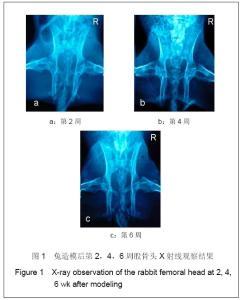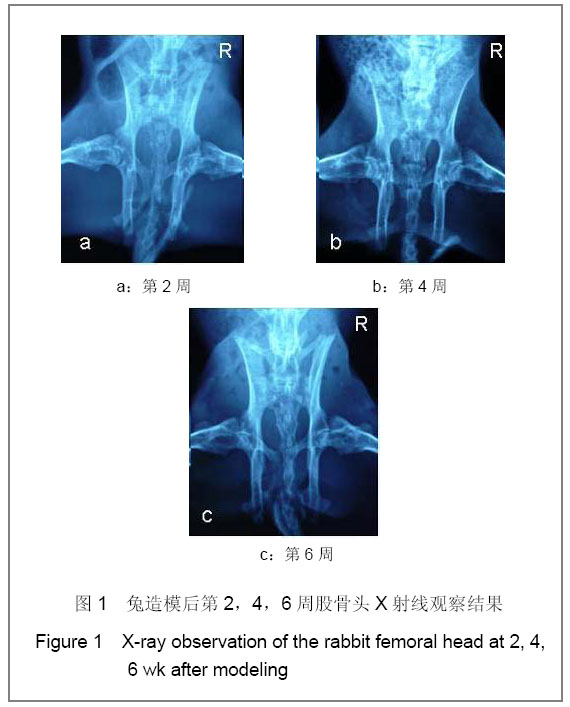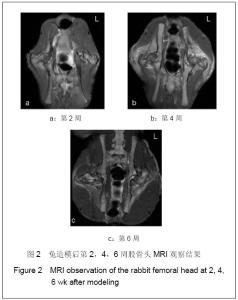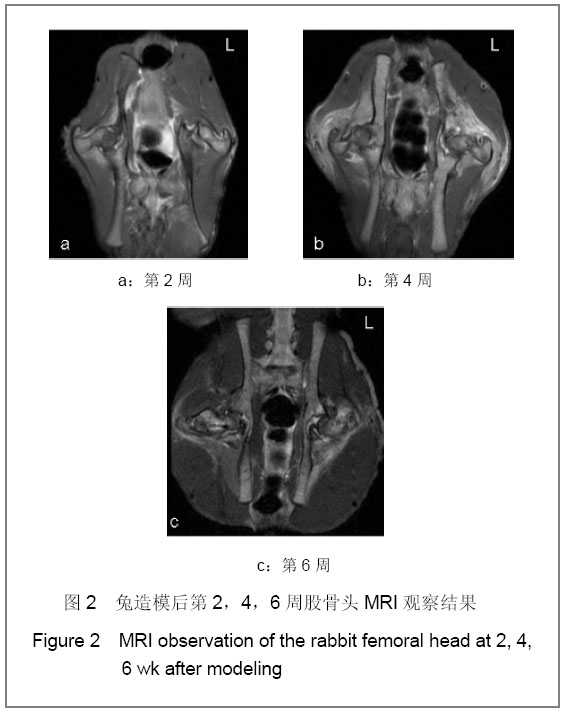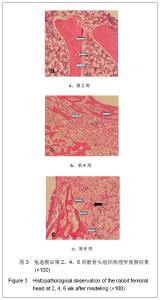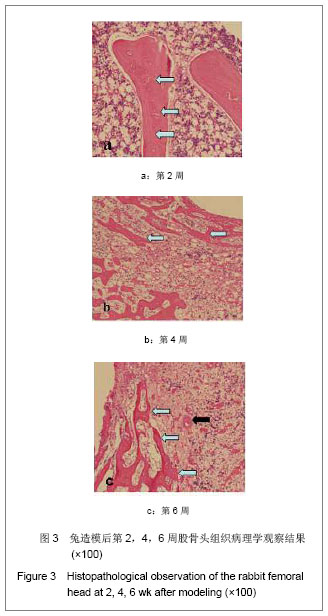| [1] Manggold J, Sergi C, Becker K , et al . A new animal model of femoral head necrosis induced by intraosseous injection of ethanol. Laboratory Animals.2002;36:173-180.[2] Meng F,Jiang P,Ling Q,et al . Experimental animal models of osteonecrosis. Rheumatol Int.2011;31: 983–994.[3] Tian L,Liang XP,Tian XH,et al.Zhongguo Zhuzhi Gongcheng Yanjiu yu Linchuang Kangfu, 2011,15(35):6571-6574.田力,梁晓鹏,田晓晔,等. 地塞米松联合脂多糖诱导股骨头坏死模型的构建[J].中国组织工程研究与临床康复,2011,15(35): 6571-6574.[4] Bellan LM, Singh SP, Henderson PW,et al.Rapid prototyping of nanofluidic systems using size-reduced electrospun nanofibers for biomolecular analysis. J A Spector Soft Matter. 2009;5: 2420-2426.[5] Li R,Stewart DJ,von Schroeder HP,et al . Effect of cell-based VEGF gene therapy on healing of a segmental bone defect.J Orthop Res.2009;27 : 8-14.[6] Christian S, Deon B, Michael B,et al.Rapid three-dimensional quantification of VEGF-induced scaffold neovascularisation by microcomputed tomography. Biomaterials.2009;30 : 5959-5968.[7] Müller AM, Davenport M, Verrier S,et al. Platelet lysate as a serum substitute for 2D static and 3D perfusion culture of stromal vascular fraction cells from human adipose tissue . Tissue Eng Part A.2009;15(4):869-875.[8] Wu XH, Yang SH, Duan DY,et al.Experimental osteonecrosis induced by a combination of low-dose lipopolysaccharide and high-dose methylprednisolone in rabbits. Joint Bone Spine. 2008;75 :573-578.[9] Yamamoto T, Hirano K, Tsutsui H, et al. Corticosteroid enhances the experimental induction of osteonecrosis in rabbits with Shwartzman reaction. Clin Orthop Relat Res. 1995;316:235-243.[10] Miyanishi K, Yamamoto T, Irisa T, et al. A high low-density lipoprotein cholesterol to high-density lipoprotein cholesterol ratio as a potential risk factor for corticosteroid-induced osteonecrosis in rabbits. Rheumatology, 2001,40:196-201.[11] Plenk Jr H, Gstettner M, Grossschmidt K, et al. Magnetic resonance imaging and histology of repair in femoral head osteonecrosis. Clin Orthop Relat Res.2001;386:42-53.[12] Wang DW,Shi BM,Zhang S. Zhongguo Zhuzhi Gongcheng Yanjiu yu Linchuang Kangfu. 2010;14(50):9413-9416.王大伟,史宝明,张爽.构建酒精性股骨头坏死动物模型的理论依据及造模方法[J].中国组织工程研究与临床康复, 2010,14(50): 9413-9416 |
